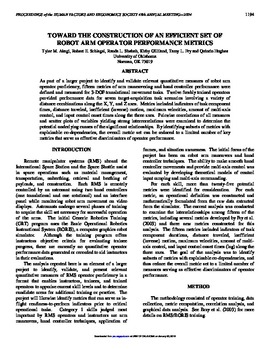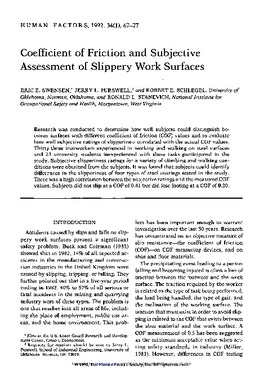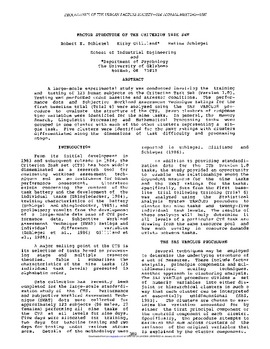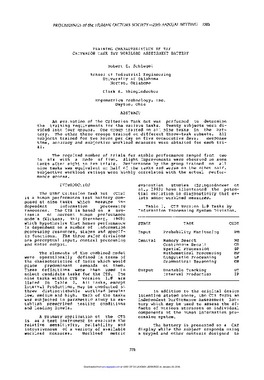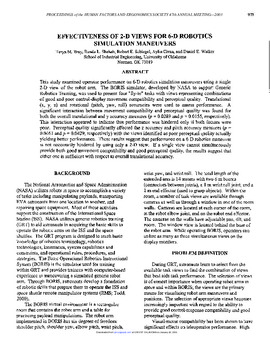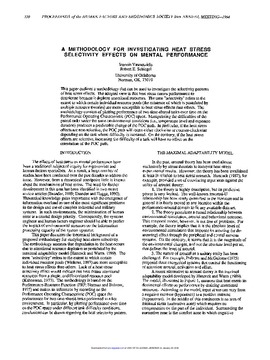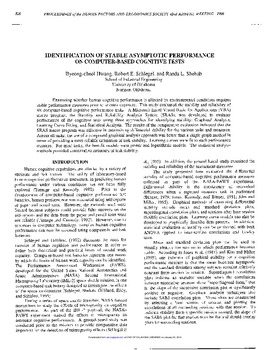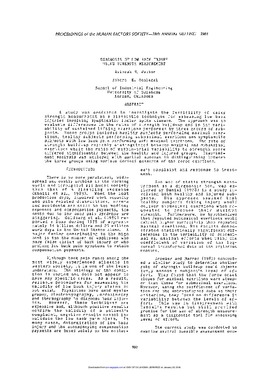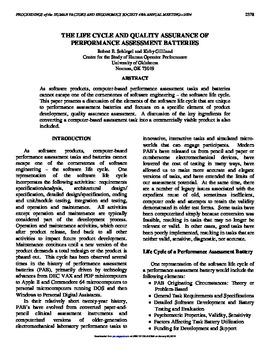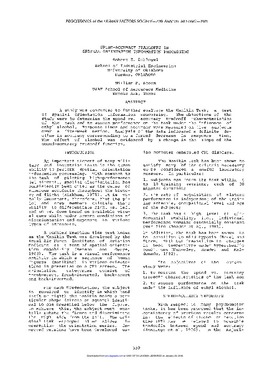Search
Now showing items 1-10 of 23
Toward the Construction of an Efficient Set of Robot Arm Operator Performance Metrics
(Proceedings of the Human Factors and Ergonomics Society Annual Meeting, 2004-09-01)
As part of a larger project to identify and validate relevant quantitative measures of robot arm operator proficiency, fifteen metrics of arm maneuvering and hand controller performance were defined and measured for 3-DOF ...
Coefficient of Friction and Subjective Assessment of Slippery Work Surfaces
(Human Factors: The Journal of the Human Factors and Ergonomics Society, 1992-02-01)
Research was conducted to determine how well subjects could distinguish between surfaces with different coefficient of friction (COF) values and to evaluate how well subjective ratings of slipperiness correlated with the ...
Factor Structure of the Criterion Task Set
(Proceedings of the Human Factors and Ergonomics Society Annual Meeting, 1987-09-01)
A large-scale experimental study was conducted involving the training and testing of 123 human subjects on the Criterion Task Set (Version 1.0). Testing was performed under baseline and stressor conditions. The performance ...
Training Characteristics of the Criterion Task Set Workload Assessment Battery
(Proceedings of the Human Factors and Ergonomics Society Annual Meeting, 1985-10-01)
An evaluation of the Criterion Task Set was performed to determine the training requirements for the various tasks. Twenty subjects were divided into four groups. One group trained on all nine tasks in the battery. The ...
Effectiveness of 2-D Views for 6-D Robotics Simulation Maneuvers
(Proceedings of the Human Factors and Ergonomics Society Annual Meeting, 2003-10-01)
This study examined operator performance on 6-D robotics simulation maneuvers using a single 2-D view of the robot arm. The BORIS simulator, developed by NASA to support Generic Robotics Training, was used to present four ...
A Methodology for Investigating Heat Stress Selectivity Effects on Mental Performance
(Proceedings of the Human Factors and Ergonomics Society Annual Meeting, 1994-10-01)
This paper outlines a methodology that can be used to investigate the selectivity patterns of heat stress effects. The adopted view is that heat stress causes performance to deteriorate because it depletes attentional ...
Identification of Stable Asymptotic Performance on Computer-Based Cognitive Tests
(Proceedings of the Human Factors and Ergonomics Society Annual Meeting, 1998-10-01)
Examining whether human cognitive performance is affected by environmental conditions requires stable performance measures prior to stressor exposure. This study evaluated the stability and reliability of six computer-based ...
Diagnosis of Low Back Injury Using Strength Measurement
(Proceedings of the Human Factors and Ergonomics Society Annual Meeting, 1984-10-01)
A study was conducted to investigate the feasibility of using strength measurement as a diagnostic technique for assessing low back injuries involving symptomatic lumbar spine disease. The approach was to evaluate differences ...
The Life Cycle and Quality Assurance of Performance Assessment Batteries
(Proceedings of the Human Factors and Ergonomics Society Annual Meeting, 2004-09-01)
As software products, computer-based performance assessment tasks and batteries cannot escape one of the cornerstones of software engineering – the software life cycle. This paper presents a discussion of the elements of ...
Speed-Accuracy Tradeoffs in Spatial Orientation Information Processing
(Proceedings of the Human Factors and Ergonomics Society Annual Meeting, 1983-10-01)
A study was conducted to further evaluate the Manikin Task, a test of spatial orientation information processing. The objectives of the study were to determine the speed vs. accuracy tradeoff characteristics of the task ...
